Dajingmen Scenic Area is located at the northern end of Qiaoxi District, Zhangjiakou City, Hebei Province. It is a national 4A-level tourist attraction and also a key national cultural relics protection unit. As one of the important passes of the Great Wall of China, it is known as one of the "Four Famous Passes of the Great Wall" together with Shanhaiguan, Juyongguan, and Jiayuguan, and enjoys the reputation of "the First Gate of the Ten-Thousand-Li Great Wall". The most distinctive feature of the scenic area is the integration of "commercial culture" and "martial culture", which not only witnesses the history of ancient military defense but also carries the prosperity of border trade. The main building of Dajingmen is a brick arch gate with a stone foundation. The gate wall is 12 meters high, 13 meters long at the bottom, and 9 meters wide; the outer side of the arch is 5.4 meters high and 6 meters wide, and the inner side is 9.5 meters high and 6.8 meters wide; the top platform is 12 meters long and 7.5 meters wide, with 1.7-meter-high battlements on the outside and 0.8-meter-high parapets on the inside. The scenic area covers Dajingmen Great Wall, Laiyuan Fort, and other areas, with a total area of about 192,000 square meters, and is a core area displaying Zhangjiakou's historical culture and the style of the Great Wall.
History and Culture
Dajingmen was built in the first year of Shunzhi in the Qing Dynasty (1644). Its construction was due to the need for military defense. Because it is located at a strategic pass with dangerous terrain, it has been a battleground for military strategists since ancient times. During the Jiajing period of the Ming Dynasty, a large-scale war broke out on average every four years, which shows the importance of its strategic position.
In addition to its military value, Dajingmen is also an important hub for border trade and cultural exchanges. As early as the fifth year of Longqing in the Ming Dynasty (1571), an area around Yuanbao Mountain outside Dajingmen gradually formed a border trade market for "tribute trade" and "tea-horse trade". In the Qing Dynasty, it became an important commercial city in the north, known as a "land commercial port" and "the capital of furs". The famous Zhangku Commercial Road started from Dajingmen, connecting Beijing and Tianjin in the south, radiating Hubei and Hunan, and reaching Kyakhta and even Moscow in Russia in the north. This made Zhangjiakou the largest tea export base and fur distribution center in China at that time, greatly promoting economic and cultural exchanges among Mongolian, Han, Hui, Tibetan, and other ethnic groups.
In 1927, Gao Weiyue, the governor of Chahar, inscribed four bold characters "Da Hao He Shan" (Magnificent Rivers and Mountains) in the Yan style on the lintel of Dajingmen, which are powerful and have become a symbolic cultural symbol of Zhangjiakou. In the history of modern revolutions, Dajingmen also left a glorious chapter: after the "September 18th Incident" in 1931, Ji Hongchang led the Anti-Japanese Alliance Army to set out from here to fight against the Japanese invaders; in August 1945, the Eighth Route Army entered Zhangjiakou through Dajingmen and liberated this ancient city outside the Great Wall; in December 1948, the Chinese People's Liberation Army completely annihilated more than 50,000 Kuomintang troops outside Dajingmen, and Zhangjiakou was liberated for the second time. These historical events have made the cultural connotation of Dajingmen more profound.
Main Attractions
Dajingmen Gate Tower
Dajingmen Gate Tower is the core attraction of the scenic area. Its architectural style is simple and heavy, reflecting the unique rugged and unrestrained momentum of northern border passes, which is unique among the Great Wall pass buildings. The four characters "Da Hao He Shan" on the lintel were inscribed by Gao Weiyue, the governor of Chahar, in 1927. The font is powerful and majestic, complementing the ancient momentum of the gate tower. Climbing up the gate tower, you can overlook the urban landscape of Zhangjiakou and the surrounding mountains and rivers, personally feel the military defense pattern of "one man guards the pass, ten thousand can't get through", and also experience the prosperous marks of being a trade channel in those years. There is an exhibition room inside the gate tower, which introduces in detail the construction history, military functions, and trade development process of Dajingmen through historical pictures, documents, and physical exhibits.
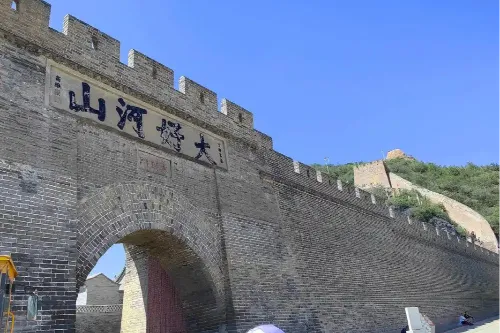
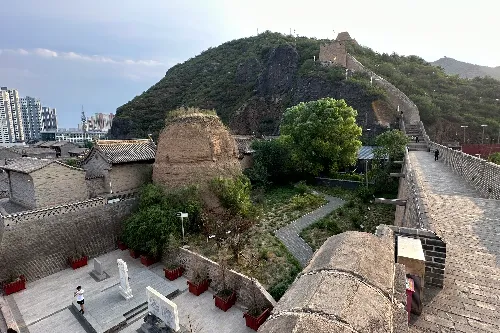
Laolongbei Great Wall
Laolongbei Great Wall is located on the west side of Dajingmen. It gets its name because the city wall winds up along the cliff of Xitaiping Mountain like a giant dragon, with a total length of about 1,500 meters. This section of the Great Wall is mostly built according to the terrain, and some sections directly use steep cliffs as natural barriers. The city wall is built with stone and blue bricks, with an average height of about 6 meters and a top width of 3-4 meters, equipped with battlements, observation holes, and other defensive facilities. Walking on Laolongbei Great Wall, you can not only enjoy the magnificent landscape where the Great Wall and mountains are integrated but also feel the wisdom and hardships of ancient craftsmen in building projects on dangerous terrain. It is an excellent place for hiking and photography.
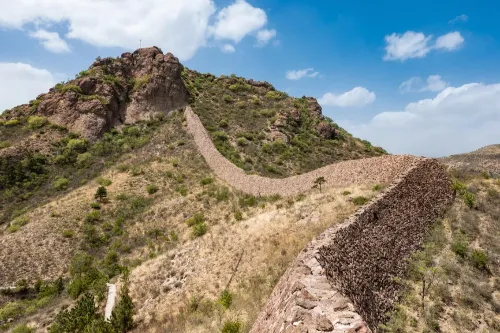
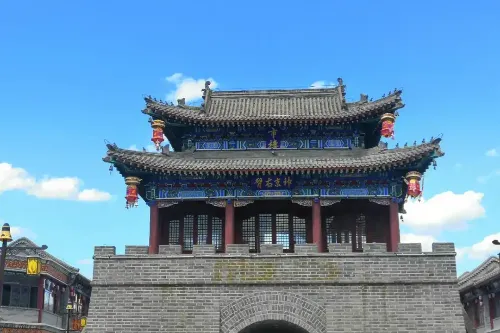
Beacon Tower
Beacon towers are an important part of the Great Wall's military defense system. On the East and West Taiping Mountains on both sides of Dajingmen, beacon towers are closely connected with the Great Wall, and there are two beacon towers at the cliff directly up the west side. There is another beacon tower on the west side inside Dajingmen, about 30 meters away from the Great Wall. It was probably built in the 21st year of Chenghua in the Ming Dynasty (1485), earlier than the construction time of the Great Wall around Dajingmen (the 25th year of Jiajing in the Ming Dynasty, i.e., 1546).
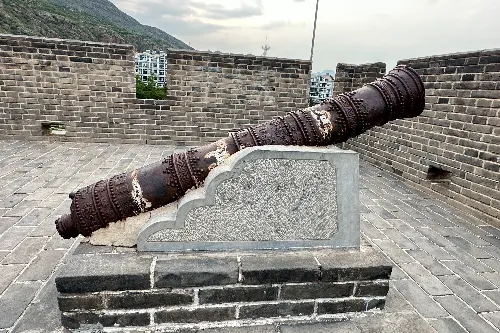
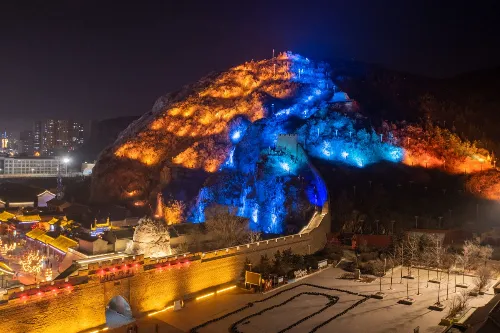
Laiyuan Fort
Laiyuan Fort is adjacent to the east side of Dajingmen. It was built in the 41st year of Wanli in the Ming Dynasty (1613) and has a history of more than 400 years. It is a military fortress built in the Ming Dynasty to ensure the safety of border trade and was also the largest trading place west of Beijing at that time. The fortress has a circumference of about 1,000 meters, a city wall 11.7 meters high, with stone as the foundation, rammed earth for the wall, covered with blue bricks. There is a corner tower at each of the four corners, and two city gates: the north gate "Laiyuan" and the southwest gate "Yongshun". Now the inscription on the "Yongshun Gate" is still clearly distinguishable. In history, there were market streets, theaters, foreign firms, shops, and other buildings in Laiyuan Fort, which was the core area of Mongolian-Han trade. Now, although only some fortress walls and architectural ruins remain, people can still feel the prosperity of border trade in those years. It is an important physical evidence for understanding the border trade system in the Ming Dynasty.
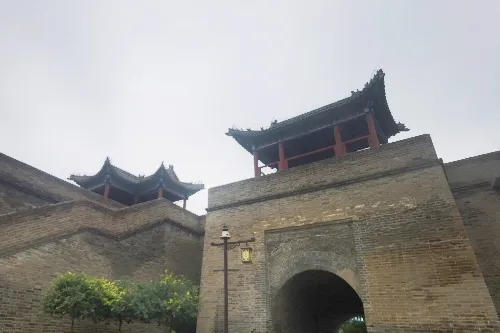
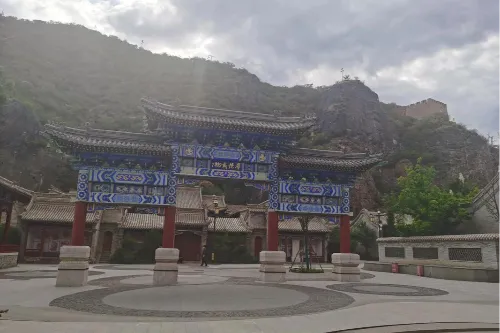
Xiaojingmen
Xiaojingmen is located about 50 meters north of Dajingmen. It was built in the Qing Dynasty, with an architectural form similar to Dajingmen but smaller in scale. It is about 3 meters wide and 4 meters high, also made of brick and stone. According to historical records, Xiaojingmen was mainly used for daily cargo transportation and pedestrian passage, serving as an auxiliary passage of Dajingmen and playing an important role in border trade. After hundreds of years of wind and rain, Xiaojingmen looks slightly old and simple, but the marks on the lintel and the mottled walls carry the memory of years. It forms a "sister pass" with Dajingmen, jointly witnessing the history of Zhangjiakou as a "land commercial port".
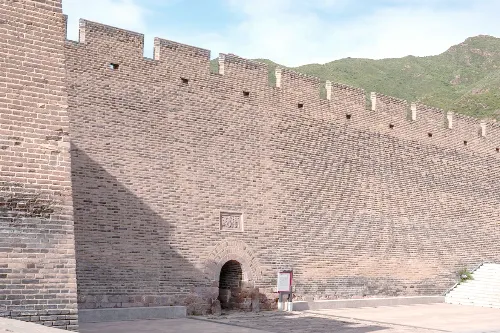
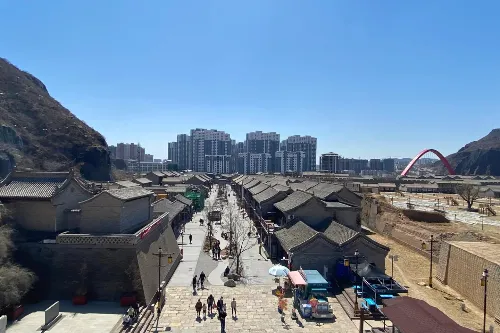
Great Wall Museum
The Great Wall Museum is located in Dajingmen Scenic Area, with a construction area of about 800 square meters. It is divided into four exhibition halls: "History of the Majestic Pass", "Military Defense", "Prosperity of Border Trade", and "Revolutionary Memory". Through a large number of precious historical relics, restored scenes, multimedia interactive devices, etc., the museum systematically displays the historical evolution, architectural characteristics, military functions of Dajingmen and the surrounding Great Wall, as well as the rise and fall of the Zhangku Commercial Road with Dajingmen as the hub and modern revolutionary stories. Among them, exhibits such as Qing Dynasty trade contracts, business firm seals, and weapons and equipment during the Anti-Japanese War are particularly precious, providing tourists with rich physical and written materials to deeply understand the history and culture of Dajingmen.
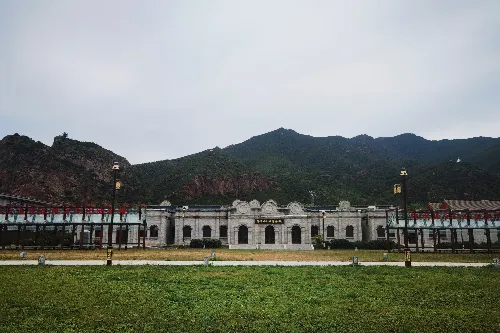
Yongshun Gate
Yongshun Gate is the southwest gate of Laiyuan Fort in Dajingmen Scenic Area, a relic of Ming Dynasty architecture. The two characters "Yongshun" on the lintel are still clearly distinguishable. As an important border trade fortress in the Ming Dynasty, Yongshun Gate was an important passage for merchants and people of Mongolian, Han, and other ethnic groups to trade in those years, witnessing the prosperity of the "tea-horse trade".
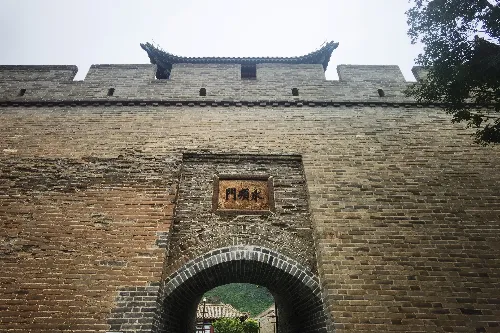
Tour Route
Tourists can enter from the main entrance of the scenic area, first reach the square in front of Dajingmen Gate Tower, enjoy the full view of the gate tower and the inscription "Da Hao He Shan", then enter the exhibition room inside the gate tower to learn about the basic historical background. This section is about 200 meters and takes 30 minutes. Then climb the gate tower, walk west along the city wall for about 800 meters to reach the entrance of Laolongbei Great Wall, and hike along the Great Wall for about 1,000 meters to enjoy the landscape where the mountain and the Great Wall blend. This section takes about 1 hour. After returning to Dajingmen Gate Tower, walk east for about 300 meters to enter the ruins of Laiyuan Fort, visit the fortress walls, Yongshun Gate, and surrounding relics, and feel the ancient border trade atmosphere, which takes about 40 minutes. Then walk north 50 meters to Xiaojingmen to learn about its functions and history, taking 20 minutes. Finally, go to the Great Wall Museum (Dajingmen Branch) to systematically learn about the history and culture of the scenic area, which takes about 1 hour. The total distance of the whole journey is about 2.3 kilometers, and the tour time is about 3.5-4 hours, which can cover all the main attractions of the scenic area.
Travel Suggestions
- It is recommended to spend half a day (3-4 hours) visiting. If you are deeply interested in history and culture, you can extend your visit to a full day to explore the details of each attraction in depth.
- The best seasons to visit are spring (April-May) and autumn (September-October), when the climate is cool and the weather is clear, making it suitable for outdoor activities and photography. In summer, it is necessary to take sun protection measures; in winter, you can enjoy the unique scenery of the Great Wall after snow.
- Most of the scenic area consists of outdoor walking paths, and some sections of the Laolongbei Great Wall have steep terrain. It is recommended to wear comfortable sports shoes and avoid high heels or sandals.
- You can bring an appropriate amount of drinking water and dry food, as there are few catering points in the scenic area. There are various local snacks in the nearby Mingdekou Street and Yuanbaojin Street, which can be arranged to taste after the visit.
- It is advisable to check relevant historical materials about Dajingmen in advance or rent an audio guide at the scenic area (rental fee: 20 yuan per unit) to gain a deeper understanding of the historical background and cultural connotations of the attractions.
- Photography enthusiasts can bring a wide-angle lens to capture the full view of Dajingmen and a telephoto lens to take detailed shots of the Great Wall. The light during sunrise and sunset is excellent, making it ideal for taking stunning photos.
Notes
- Protect cultural relics and historic sites. It is strictly forbidden to carve, graffiti, or post on historical buildings such as city walls, gate towers, and stone steles. Violators will be punished in accordance with the "Cultural Relics Protection Law".
- Some sections of the Laolongbei Great Wall have not been fully restored, with uneven roads and no guardrails. When visiting, you must concentrate, walk close to the inner side, and never climb dangerous sections.
- Smoking is prohibited in the scenic area, and it is strictly forbidden to bring inflammable and explosive items into the area to protect the safety of cultural relics and the ecological environment.
- There are many tourists during holidays and peak travel seasons. It is necessary to take good care of the elderly and children to avoid getting separated, and at the same time, keep personal belongings safe to prevent loss.
- After rain or snow, the city walls and roads are easy to slip. It is recommended to postpone the visit to the Laolongbei Great Wall. If you must go, walk carefully and slowly, and wear anti-slip equipment if necessary.
- Abide by the opening hours of the scenic area, plan your visit in advance, and avoid being in remote sections before closing time, which may affect your return trip.
Transportation
- Bus: You can take buses No. 16, 32, 33, 34, or 102 in the urban area, get off at "Dajingmen" Station, and walk about 100 meters to the entrance of the scenic area. The bus interval is 10-15 minutes, and the first and last bus times are 6:00-20:00 (summer) and 6:30-19:00 (winter), with a fare of 1-2 yuan.
- Self-driving: Starting from the urban area of Zhangjiakou, drive north along Xibagang Road to the northern end, then turn into Zhenggou Street to reach the scenic area parking lot. The parking lot covers an area of about 5,000 square meters and can accommodate more than 200 small cars. The parking fee is 5 yuan per hour, with a maximum of 20 yuan within 12 hours.
- Taxi: Taking a taxi from Zhangjiakou Station (high-speed railway station) to Dajingmen Scenic Area is about 15 kilometers, taking 30 minutes, with a cost of about 30-40 yuan; taking a taxi from Zhangjiakou Ningyuan Airport, it is about 20 kilometers, taking 40 minutes, with a cost of about 40-50 yuan.
Opening Hours
Dajingmen Scenic Area is open all year round, and the opening hours are adjusted according to the season: from April 1st to October 31st (peak season), the opening hours are 8:00-18:30, and the last entry time is 18:00; from November 1st to March 31st of the next year (off-season), the opening hours are 8:30-17:30, and the last entry time is 17:00. The Great Wall Museum (Dajingmen Branch) in the scenic area has the same opening hours as the scenic area and is closed on Mondays (except legal holidays).
Ticket
As of August 19, 2025, the scenic area is open for free, but there is a charge of 13 yuan per person for climbing the gate tower. You can search for the official WeChat account "不二大境门" to get the latest updates.
Online Booking
Click here to jump to the Trip.com ticketing platform for ticket purchase.
